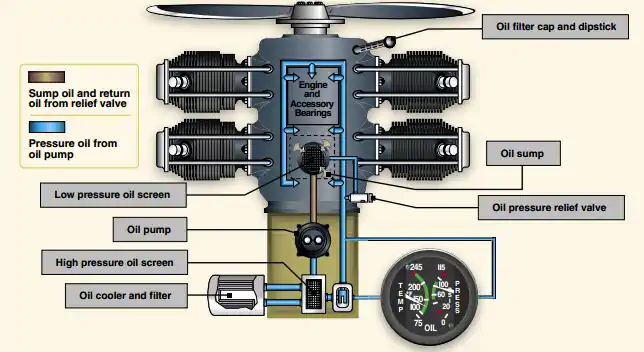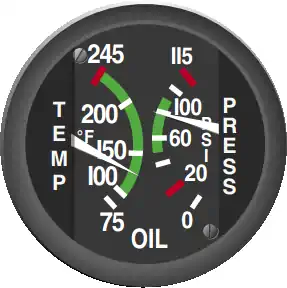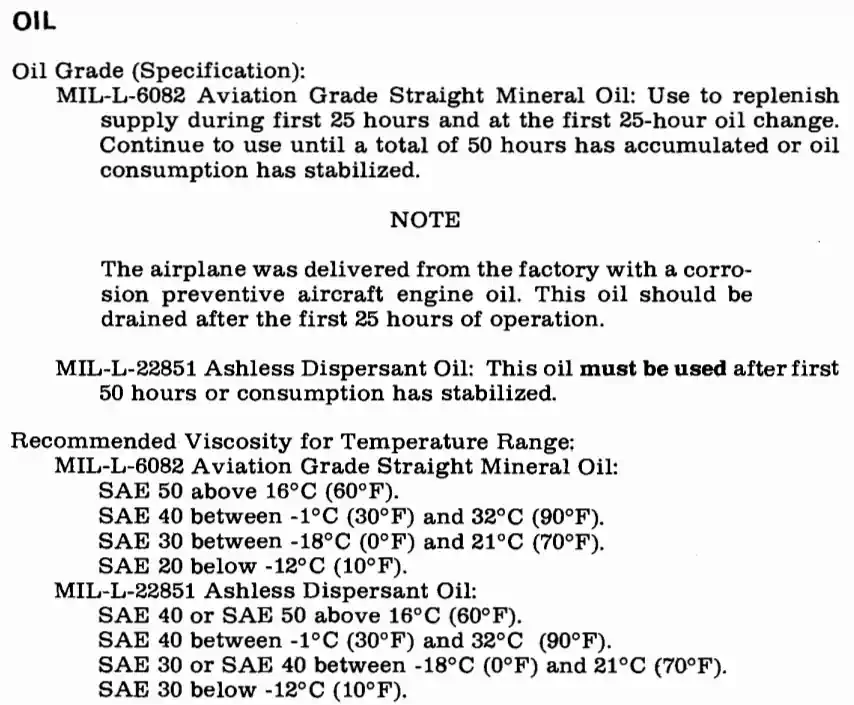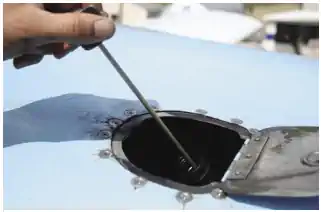Lubrication System

- Oil is carried in a sump, which is an integral part of the engine [ Figure 2 ]
- The main component is the oil pump, which draws oil from the sump and routes it to the engine
- After the oil passes through the engine, it returns to the sump
- In some engines, additional lubrication is supplied by the rotating crankshaft, which splashes oil onto portions of the engine
Dry-Sump:
- Oil is contained in a separate tank, and circulated through the engine by pumps
- These tanks are always larger than the oil it is meant to contain to compensate for thermal expansion
- An oil pump also supplies oil pressure in a dry-sump system, but the source of the oil is located external to the engine in a separate oil tank
- After oil is routed through the engine, it is pumped from the various locations in the engine back to the oil tank by scavenge pumps
- Dry-sump systems allow for a greater volume of oil to be supplied to the engine, which makes them more suitable for very large reciprocating engines
- Most jet engines will consist of a dry sump design
- When checking the oil level on an dry-sump engine that has been sitting idle, readings may be inaccurate unless rotated (or "burped")
Lubrication System Components:
Oil Filter:
- The oil filter is responsible for screening the oil for foreign debris
- Oil filters accomplish this by pushing oil through a one or more screens or paper filters
Oil Screens:
- There are two types of oil screens:
- Pressure Screens, or;
- Suction Screens
Suction Screens:
- Suction screens are screens placed before the oil pump in the lubrication system , filtering out the largest contaminents before they enter delicate system components
Pressure Screens:
- Pressure screens filter finer particulates, down to 60 microns
Paper Oil Filters:
- Paper oil filters are a newer technology in which paper completes the functions of an oil screen
Oil Filler Cap/Dipstick:
Heat Management:
- A critical purpose of engine oil is to help manage cooling
- This occurs by cool oil moving through warm areas, picking up the heat, and dissipating it through a radiator
Oil System Gauges:

- System is monitored through pressure and temperature gauges [ Figure 3 ]
Oil Pressure Gauge:
- The oil pressure gauge provides a direct indication of the oil system operation [ Figure 3 ]
- It ensures the pressure in pounds per square inch (psi) of the oil supplied to the engine
- Green indicates the normal operating range, while red indicates the minimum and maximum pressures
- There should be an indication of oil pressure during engine start
- Refer to the AFM/POH for manufacturer limitations
Oil Temperature Gauge:
- The oil temperature gauge measures the temperature of oil [ Figure 3 ]
- It is usually measured after passing through the oil cooler
- A green area shows the normal operating range and the red line indicates the maximum allowable temperature
- Unlike oil pressure, changes in oil temperature occur more slowly
- This is particularly noticeable after starting a cold engine, when it may take several minutes or longer for the gauge to show any increase in oil temperature
- Check oil temperature periodically during flight especially when operating in high or low ambient air temperature
- High oil temperature indications may signal:
- Plugged oil line or cooler
- low oil quantity (possible engine failure)
- Defective temperature gauge
Oil/Lubrication Malfunctions/Emergencies:
- Oil consumption depends primarily upon the efficiency of the seals
- Oil can be lost through internal leakage, and, in some engines, by malfunctioning of the pressurizing or venting system
- Increases in oil temperature are not always associated with a drop in oil pressure, nor a rise in CHTs
Low Oil Pressure:
- Low oil pressure can be caused by an oil leak which leads to lack of oil in the system, or an ineffective oil pump
- These emergencies can be particularly detrimental when flying an aircraft utilizing a constant-speed propeller
Low Oil Pressure Primary Indications:
- Oil pressure will indicate low
Low Oil Pressure Secondary Indications:
- Rising Cylinder Head Temperatures (CHT)
- Oil temperature may rise (if the pressure drops rapidly then it is less likely you will have a corresponding temperature indication
- Rough engine indications
Low Oil Temperature:
Primary Indications:
- Oil temperature will indicate low
Secondary Indications:
High Oil Temperature:
High Oil Temperature Primary Indications:
- Oil temperature will indicate high
High Oil Temperature Secondary Indications:
- Other temperatures will indicate high
- Possible smoke
- Low oil pressure
- High RPM
High Oil Temperature Considerations:
- Open cowl flaps, if equipped
Oil Leaks:
- Oil on windscreen may come from engine or propeller
Oil System Inspections:
Inspecting the oil system is not a routine check, but rather a detailed review of aircraft engine health
Oil Inspection:
- Pilots should inspect the oil as part of the pre-flight checklist
- Inspecting the oil is critical in determining the quantity and condition of oil
- Oil should never go below the Pilot Operating Handbook specified minimum quanty
- The color of the oil is a reflection of oil age and engine health
- New, clean oil should be light in color
- Dark oil is generally the result of contaminates and oxidation after many hours of operation
- Too dark is a judgement call based on the amount of hours of use
- Dark oil may be due to bad piston seals
- Smaller sumps should therefore be changed/drained more often
Oil Filter Inspection:
- It is never required, but pilots who own their airplane may elect to inspect the oil filter for tell-tale signs of wear
- Oil filters are designed to bypass, if clogged, but are only meant to last for the life of the oil
- Oil filters should be changed with every oil change
- Changing an oil filter often also allows for consistent engine health trend analysis
Private Pilot (Airplane) Operation of Aircraft Systems Airman Certification Standards:
- Objective: To determine the applicant exhibits satisfactory knowledge, risk management, and skills associated with safe operation of systems on the airplane provided for the flight test.
- References: FAA-H-8083-2 (Risk Management Handbook), FAA-H-8083-3 (Airplane Flying Handbook), FAA-H-8083-23 (Seaplane, Skiplane, and Float/Ski Equipped Helicopter Operations Handbook), FAA-H-8083-25 (Pilot Handbook of Aeronautical Knowledge); POH/AFM
- Note: If K1 is selected, the evaluator must assess the applicant's knowledge of at least three sub-elements
- Private Pilot Operation of Aircraft Systems Lesson Plan







